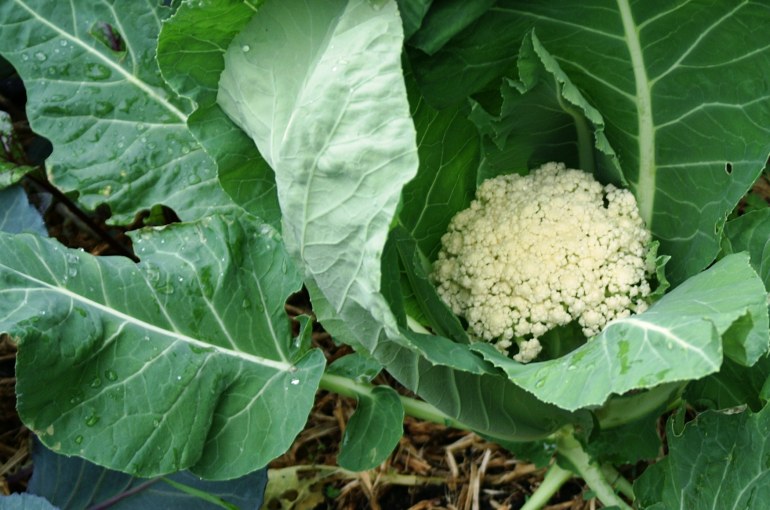How to Easily Grow Cauliflower at Home – Backyard Cauliflower Growing

Vegetables
This post is also available in:
This post is also available in:
![]() Español (Spanish)
Español (Spanish) ![]() Français (French)
Français (French) ![]() Deutsch (German)
Deutsch (German) ![]() Nederlands (Dutch)
Nederlands (Dutch) ![]() हिन्दी (Hindi)
हिन्दी (Hindi) ![]() العربية (Arabic)
العربية (Arabic) ![]() Türkçe (Turkish)
Türkçe (Turkish) ![]() 简体中文 (Chinese (Simplified))
简体中文 (Chinese (Simplified)) ![]() Русский (Russian)
Русский (Russian) ![]() Italiano (Italian)
Italiano (Italian) ![]() Ελληνικά (Greek)
Ελληνικά (Greek) ![]() Português (Portuguese (Brazil))
Português (Portuguese (Brazil))
You can either grow your cauliflower in your backyard or in pots, provided your containers have at least 45 cm (18 inches) width and height. However, growing fruits and vegetables at home may be risky. Here are some things you need to know.
- Cauliflower is considered a cool-season plant. If you grow them in warm areas, you shall know that flower heads will most probably start to bloom. This is, in general, an unpleasant situation, unless you prefer to end up with an ornamental, instead of a green vegetable! Thus, you may not grow them in areas with temperatures over 30 °C (86 °F).
- You can plant your cauliflower seedling either during autumn or spring; however, the best period in many cases is autumn in order to avoid high temperatures of early summer. In order to form flowery heads, cauliflower ideally needs temperatures close to 15-20°C (59 to 68 °F). Late Cauliflower varieties may need to come through a procedure called vernalization in order to be able to form the heads. This means they need to be exposed for some hours in temperatures of 7-12°C (44.6-53.6 °F). Early varieties do not normally have the same need.
- The easiest method to grow cauliflower is by transplanting the seedlings you bought from your local nursery. You can consider buying your plants from a legitimate seller to make sure they are disease-free and directly plant them into their final positions. All you have to do before transplanting is to remove any weeds, rocks, or other unwanted materials from the soil. You can plow the soil slightly in order to improve its texture. You can also add some well-digested manure or compost in order to increase soil’s nutrients.
- Then, you can transplant your cauliflower seedlings directly into the soil, keeping distances of 20-50 cm (7.9-19.7 inches) between plants in the row and 70-80 cm (27.5-31.5 inches) between rows. It is crucial to plant the seedlings in the same depth as they were in the nursery. After transplanting, you can irrigate immediately.
- Alternatively, you may consider starting your crop by sowing the seeds directly into the soil. You can buy your seeds from a legitimate seller to make sure they are disease-free and directly sow them in rows with an average distance of 70-80cm (27.5-31.5 inches) between them. A good period to start planting in most cases is no later than late summer. Before planting, you have to remove any weeds, rocks, or other unwanted materials from the soil. Then, you can plow it in order to improve its texture. You may also need to add some well-digested manure or compost to increase the soil’s nutrients. Then, you may dig small holes and sow 2-3 seeds directly into the ground at a depth of 1 cm. On average, you will need 1-1.5 grams of seed per 10 square meters. Cauliflower seeds generally germinate best at an average temperature of 26 °C (80°F). Cauliflower seeds sprout approximately in 8-10 days. After germination, you will have to thin the plants in case they all have sprouted, keeping only the healthier one in every sowing position. The plants you will finally keep should be at distances of 20-50 cm (7.8-19.6 inches) one from another inside the raw.
- Cauliflower is sensitive to drought, as it decreases their flowery heads’ quality significantly. Thus, you shall provide your plants with sufficient amounts of water. Most backyard farmers irrigate their cauliflower plants by providing small amounts of water every other day during the first stages. They maintain the soil moist until the seeds sprout and increase the amount ever since. However, during hot days, you may have to water once a day.
- As a fertilization method, all you need is some manure or compost. The manure you may have integrated into the soil before planting will most probably be sufficient for the entire growing season.
- Harvesting time depends on environmental conditions and cauliflower variety. Most cauliflower varieties are ready for harvesting 2-5 months (60 to 150 days) after transplanting. The right time to harvest a cauliflower for home use is when it has formed a compact head with an average diameter of 18 cm (7 inches) or less.









































































